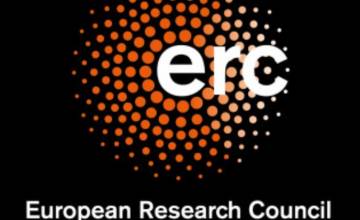ULB-UMONS Study Explains the Influence of Nectar Sweetness on Bees’ Foraging Ability
This original study, which has just been published in the American journal Proceedings of the National Academy of Sciences (PNAS), focuses on the ability of bees to capture the nectar they collect while foraging on flowers using their tongue, which is equipped with very long papillae. The collaborative ULB-UMONS team succeeded in highlighting the importance of the degree of sweetness of the nectar in the efficiency of the foraging process.
Bees feed on the nectar they collect from flowers using their tongue, which contains very long papillae.
Bees are peaceful foragers that help pollinate flowering plants by collecting nectar. This sweet liquid, which provides them with the energy they need to live, is collected with their tongues, which they dip into the nectar 5 times per second. The higher the sugar content of the nectar, the more energy it provides.
To increase their attractiveness to insects, and thus their chance of being pollinated, plants should therefore produce the sweetest nectar. In reality, its sugar concentration rarely exceeds 60%.
The reason for this limitation lies in the capture mechanism itself. In vivo laboratory measurements show that beyond this limit, bees capture less nectar with each time they dip their tongues into it. However, the reasons behind this reduction in the efficiency of the bees’ tongues were not known.
Led by Fabian Brau of ULB (ULB – Faculty of Sciences), Pascal Damman (UMONS – Faculty of Science) and Denis Michez (UMONS – Faculty of Science), researchers from ULB and UMONS have just shown that the shape of the papillae on the bee’s tongue determines the sugar concentration for which calorie absorption is optimal in these insects.
Published in PNAS, this interdisciplinary study, combining in vivo experiments with a nectar capture model, has provided insight into the essential role of papillae in nectar capture in bees.
Of the 20,000 bee species known to date, almost half have a long tongue with very slender papillae (Figure 1). To collect nectar, bees cyclically dip their tongues into it. Experiments carried out under a microscope equipped with a high-speed camera show that when the tongue is immersed in nectar, the papillae open up like the hairs of a paintbrush. This mechanism therefore makes it possible to trap a greater quantity of nectar than a tongue with no papillae would. However, the same experiments show that this morphological advantage no longer plays a role when the sugar content of the nectar exceeds a critical value. Indeed, when the sugar concentration increases, the viscosity of the nectar increases rapidly and prevents the papillae from opening completely before the tongue withdraws from the nectar.
Using a fluid mechanics and stem elasticity approach, the researchers succeeded in modelling the movement of papillae in a viscous liquid. By combining the theoretical model obtained with measurements of the morphology of the tongue, they were able to explain why the rate of nectar ingestion in bees fell sharply when the sugar content exceeded 60%. Their theoretical predictions were confirmed by in vivo measurements of these ingestion rates in several bee species.
Surprisingly, this study shows that the precise value of this sugar concentration limit is determined by the relationship between the length and diameter of the papillae. A correlation between the morphology of the bee’s tongue and the viscosity of the nectar would have been difficult to predict in advance and reveals a process of co-adaptation between plants and their pollinators.
This research was conducted with the support of the FNRS – Research project F.R.S-FNRS “ElastoCap” T.0025.19
For more information, please contact:
Fabian Brau – Nonlinear Physical Chemistry Unit (NLPC), Faculty of Sciences, ULB – fabian.brau@ulb.ac.be
Pascal Damman – Interfaces and Complex Fluids Laboratory, UMONS
Denis Michez – Laboratory of Zoology, UMONS



